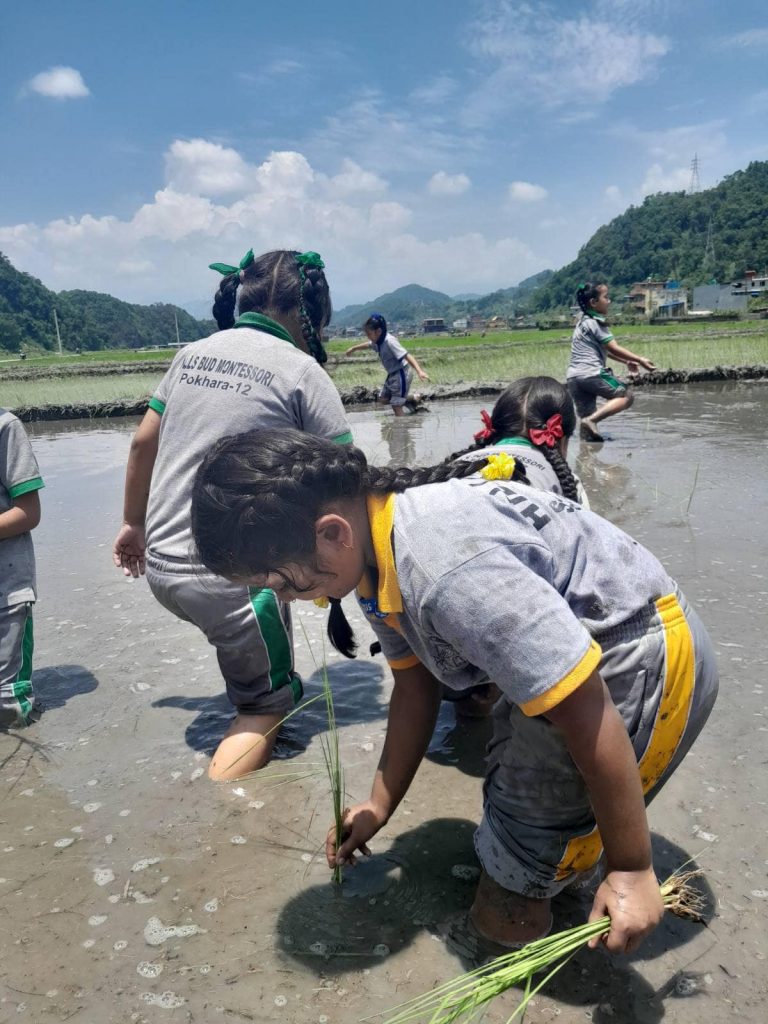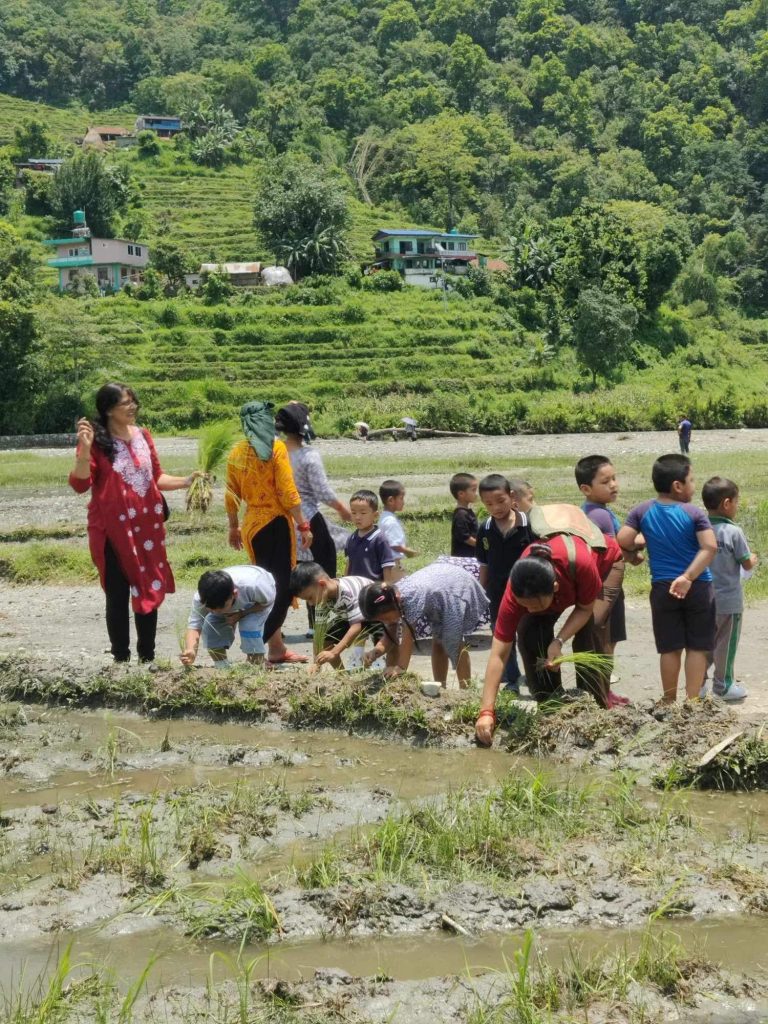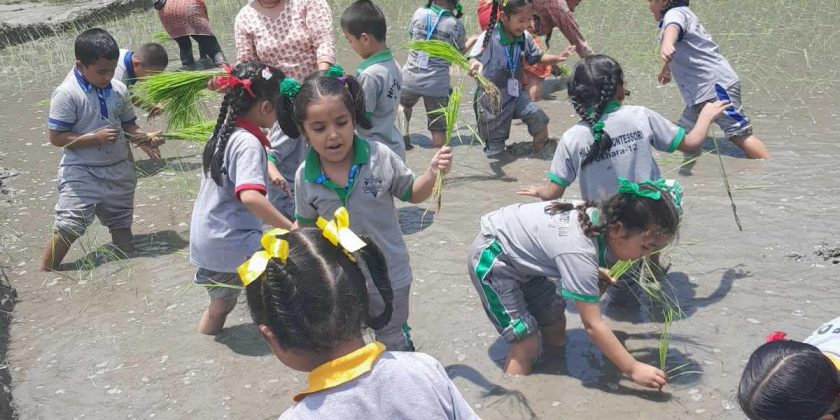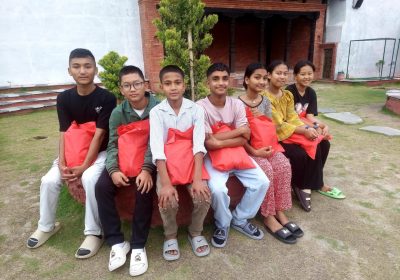Paddy is the main food crop and staple food of Nepalese people. Depending upon the type, paddy can grow up to the height of 3 to 4 feet. It is a tropical crop which requires an average of 28 degrees centigrade temperature and 150 cm of rainfall and is planted in July and harvested in November. It needs alluvial soil supplied from the rivers. The paddy field should be full of water, thus it requires plain land to stop water from flowing. In the Hill area they are grown in the terraces and during the harvesting time it should be sunny and manpower is needed to collect the crops. Overall, 80% of the total production is done in the Terai region and the remaining 20% grows in the Hill and Lower Himalayan regions. The local types of paddy are: Jetho Budho and Pokhreli Basmati which are grown in Pokhara and the Terai and Marsi are grown in the lower Himalaya region. Several dishes such as rice pudding, boiled rice, pancakes, and beaten rice are produced from the paddy. Our “Shamrock 9” students and Oak House School Barcelona students had the opportunity to participate in paddy field planting.







